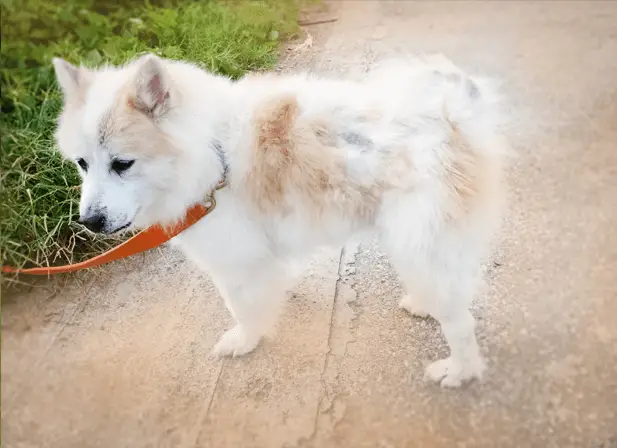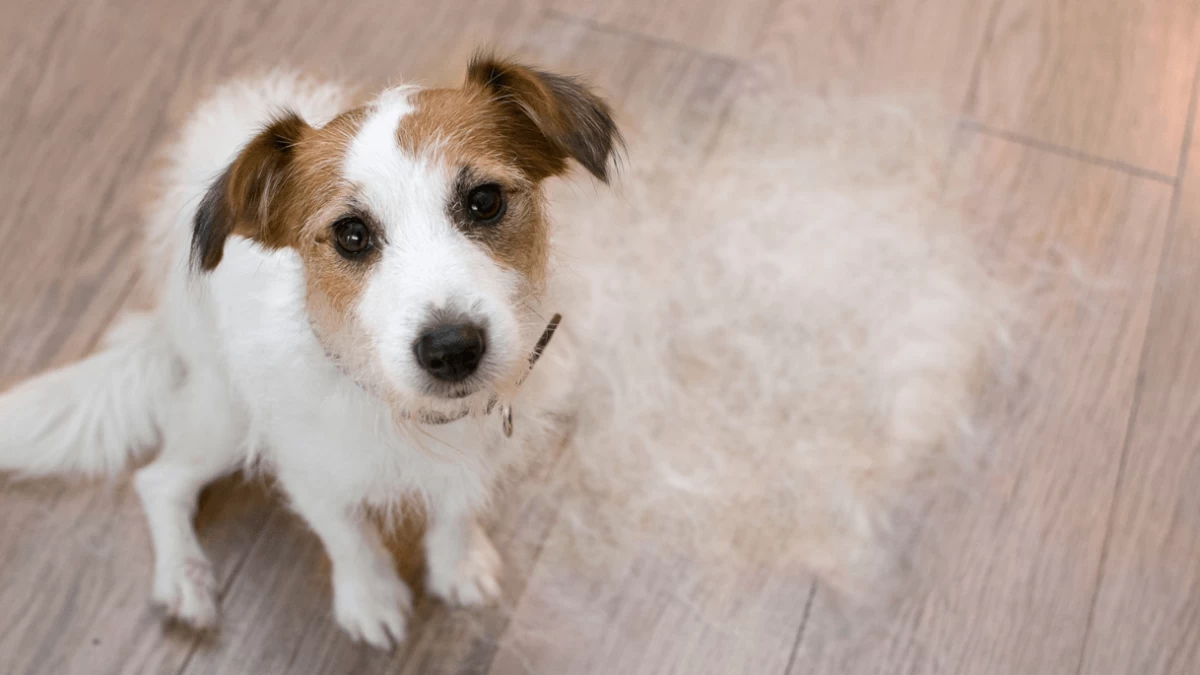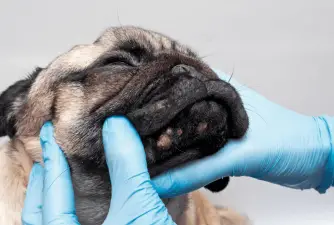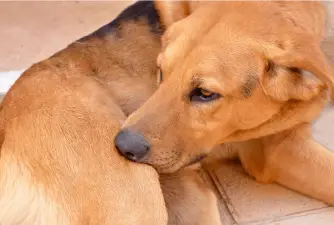Is Your Dog Losing Hair? Here Are Some Common Causes
27.05.2021.
Shedding might be a part of living with dogs, but excessive hair loss shouldn’t be. If you noticed your dog losing hair, you should look a bit more into the issue and get to the root of the problem. Hair loss in dogs can be a worrying sign, and many dog owners whose dogs are losing hair wonder, “Why is my dog losing hair?” Here are some of the most common reasons a dog is losing hair.
Why is my dog losing hair?
As a responsible dog owner, you should notify your vet when you notice something wrong with your dog. Dogs shouldn’t naturally go bald, and hair loss in dogs is usually a worrying sign. Here are some of the most common reasons dogs lose their hair;
Allergies
Like humans, dogs can be allergic to different allergens. Dogs can have environmental allergies, food allergies, cleaning products, or perfumes. These are not all the types of allergies dogs can have, but any of them can be a reason your dog is losing hair. One of the most common types of allergies is environmental allergy. Things like pollen can irritate our dogs, and we should help them any way we can.
What to do about it?
The best way to prevent allergy-caused hair loss in dogs is to eliminate the allergen completely. If your dog has food allergies, switch them to a diet that has limited ingredients. If your dog has flea bite allergies, make sure they are not infected with fleas. You can give your dog allergy medications, but the best way to deal with this issue is by preventing it.

Genetics
Some dogs are simply prone to hair loss. There are even hairless breeds like the American Hairless Terrier or Chinese Crested Dog that naturally have no hair on their bodies. However, some breeds like Chihuahuas, Dachshunds, or Whippets have a natural tendency to lose hair. Keep in mind that large bald spots are still not normal, and you should check your dog for underlying health issues.
What to do about it?
Unfortunately, there is not much you can do about it. If your dog is losing hair because of genetics, they will simply lose hair. The only thing you can do is make sure your dog’s diet includes plenty of omega fatty acids and hope their coat will be as healthy and as full as possible.
Cushing’s disease
Cushing’s disease is a disorder that causes the dog’s body to overproduce the hormone cortisol. Cortisol is also called “stress hormone,” so it is not entirely surprising hair loss is one of the symptoms of this disease. This disease is more common in dogs over 6 years of age. Other symptoms will include frequent urinating, eating, and drinking, as well as a pot-bellied appearance.
What to do about it?
Cushing’s disease can be controlled and treated in a couple of ways. In 2008, FDA approved a medication that can help vets manage the disease. The other option is surgery. Both options are somewhat expensive, so make sure you notice symptoms as soon as possible. Your vet will decide what the best treatment option is based on the actual cause of the disease.
Infections/Infestations
Another common cause of dog hair loss is parasites. Parasites like mites, fleas, or ticks can cause your dog to lose hair. Your dog will experience other symptoms of infection like inflammation, crusty skin, hair loss, itchiness, and redness. If your dog has flea bite allergies, the reaction will be severe and can last for a couple of days.
What to do about it?
The best thing you can do is prevent these infections from happening. The best way to do that is to make sure your dog has a flea collar, and they are regularly dewormed. If the infestation already happened, call your vet and ask for advice. There are special types of dog shampoo that will help you get rid of parasites. However, the best treatment will depend on what parasites infected your dog.
Post-clipping alopecia
When a dog needs surgery, the vet might have to clip a part of their coat to make an incision. It would be impossible to reach the area through all that hair without it. When that is the case in breeds like Alaskan Malamutes, Akitas, or Huskies, which have thick, double coats, post-clipping alopecia can happen. That means the hair won’t grow in the clipped area.
What to do about it?
Unfortunately, there is no cure for post-clipping alopecia. It might take some time for the hair to grow back, and the only thing you can do is wait and hope. Keep an eye on the affected area and make sure your dog has plenty of omega fatty acids in their diet. You can add things like fish oil that will boost the omega fatty acid value to your dog’s food.
Hypothyroidism
Hypothyroidism is a disorder of the thyroid gland. The thyroid gland produces a hormone called thyroxine that controls metabolism. When the gland doesn’t produce enough of that hormone, the result can be hair loss. It is commonly found in Golden Retrievers, Dobermans, Cocker Spaniels, Boxers, and Irish Setters. However, all dog breeds can be affected by hypothyroidism.
What to do about it?
Hypothyroidism is not curable. This is a disorder your dog will carry with them their whole life. Luckily, with proper medication, hypothyroidism is manageable. Your dog will have to take hormone pills for the rest of their lives. Still, if you keep an eye on them and administer meds regularly, there is no reason your dog can’t live a happy and otherwise healthy life.
World Dog Finder team







Share